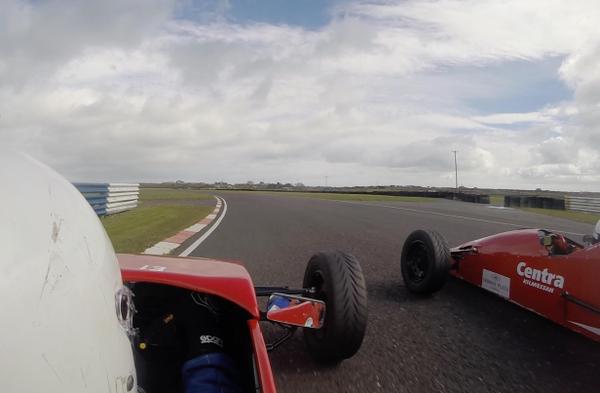Like basketball players have practice days, race car drivers do too, but a racing test day takes a slightly different tone than a shirts-and-skins scrimmage. Since the racing driver’s test day typically involves a new piece of equipment, a new car or a new track, the learning curve can be quite steep. Since there isn’t any prize on the line, how far should one push on a test day?
Here we see Des Foley, a young Irish racing driver whom you may have seen in our article titled “Like Passing? Try Formula Vee!”, getting a chance to try something quicker than his usual Volkswagen-powered ride: a Formula Ford. This Van Diemen RF00 boasts more grip and much more power than his Formula Vee, and adjusting to these new demands takes some getting used to. Though the Vee and Ford have similarly-sized tires, increased chassis rigidity makes the latter car a much more incisive, rewarding and ultimately quicker car in the corners. Couple that with an obvious increase in torque and horsepower, the bar is set a bit higher.
Seeing as the walls here are quite close, Foley exercises some restraint while still putting in considerable effort; explaining his thought process going into a test day with a fairly expensive car. This young driver is wise beyond his years and drives conservatively, knowing there’s nothing on the line. Getting used to driving a new car takes time and therefore, shouldn’t be rushed into. Careful consideration and a certain amount of mechanical sympathy are required for a successful test day, and under no circumstances should one rack up unnecessary crash damage. Keeping in mind that a corner costs roughly $1,000 on a Formula Ford, you’ll have no problem braking a little earlier than you would on race day.






















